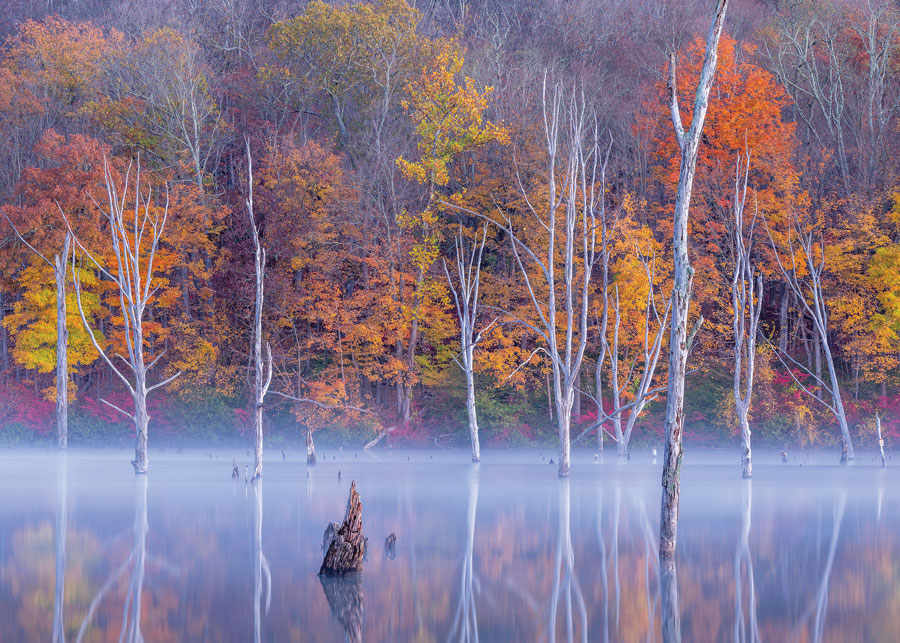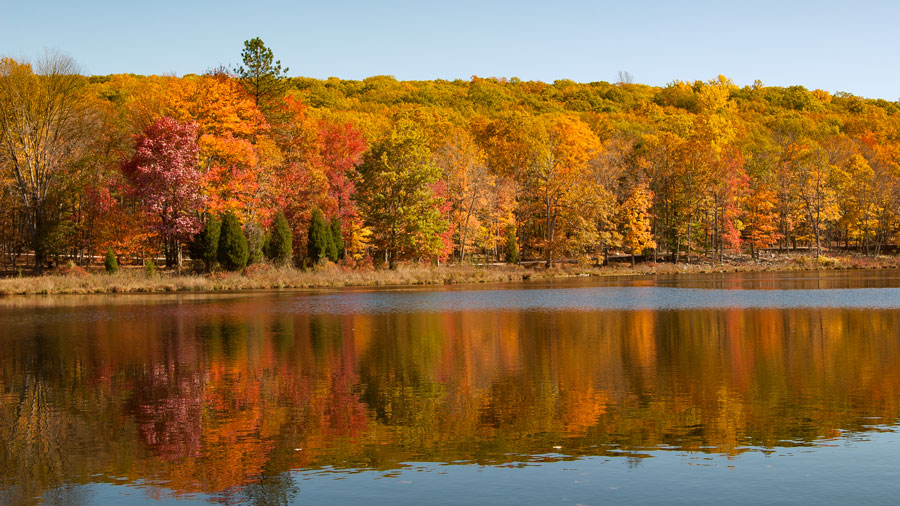
The annual fall foliage bloom is dependent primarily on moisture and the first frost, but peak leaf viewing in Northwest New Jersey normally occurs somewhere around mid October through early November. The quality of a year's peak varies for several reasons. Some years, because of dry weather, the swamp maples, ash and other shallow rooted trees turn early in spite of warm temperatures. They are already fading when the deep-rooted, dominant hickories and oaks begin to develop warm, rustic hues as a result of a frost several weeks later. Sometimes the change spreads out over a month, and we miss those special few days when everything happens at once. Even when conditions are "perfect," lack of sunlight can subdue the effect. Then a big storm comes along and blows the vulnerable leaves to the forest floor. Actually, the brilliant hues that show up in autumn foliage are always there- in the sugars and trace minerals that the trees pull up from the ground. A leaf changes its visible color when the chlorophyll- the green stuff that transforms sunlight into the complex sugars that nourish the tree- stops doing its job, recedes and allows the underlying hues to show through. The best color is achieved in a year with sufficient rain and a hard first frost for a few days that kills the connection between the leaf and the tree abruptly, trapping the sugars and minerals in the leaf. Then if it warms up again to allow the colors to develop, we've got a memorable season.

Foliage in the Skylands is different than that of New England because of our wide variety of trees. New England forests are dominated by sugar maple, which, dependent only on the first frost, provides a vivid and consistent foliage bloom, but one that is always the same. When we hit a good year, the deep hues of oak and hickory, a pinpoint splash of scarlet oak, the mahogany color of ash, the brilliant yellows from tall, fast-growing tulip poplar, the golden leaf of the black hickory and the splendid glow from several varieties of maple, combine to produce an effect that is more spectacular. It is not, however, an immutable annual occasion in which all these species and factors act in perfect concert. There is nothing quite so stirring as an expanse of forest at the peak of its foliage color change. The Interstates take you quickly through a wide variety of terrain and, therefore, color.

Take any loop north or south on a county road and you'll find a radiant maple standing solitary in a farmer's field. Or get up high on a ridge- or even a hot air balloon- and look over breathtaking vistas you'll remember for a long time. Some years are better than others. Some years are the best you'll find anywhere.